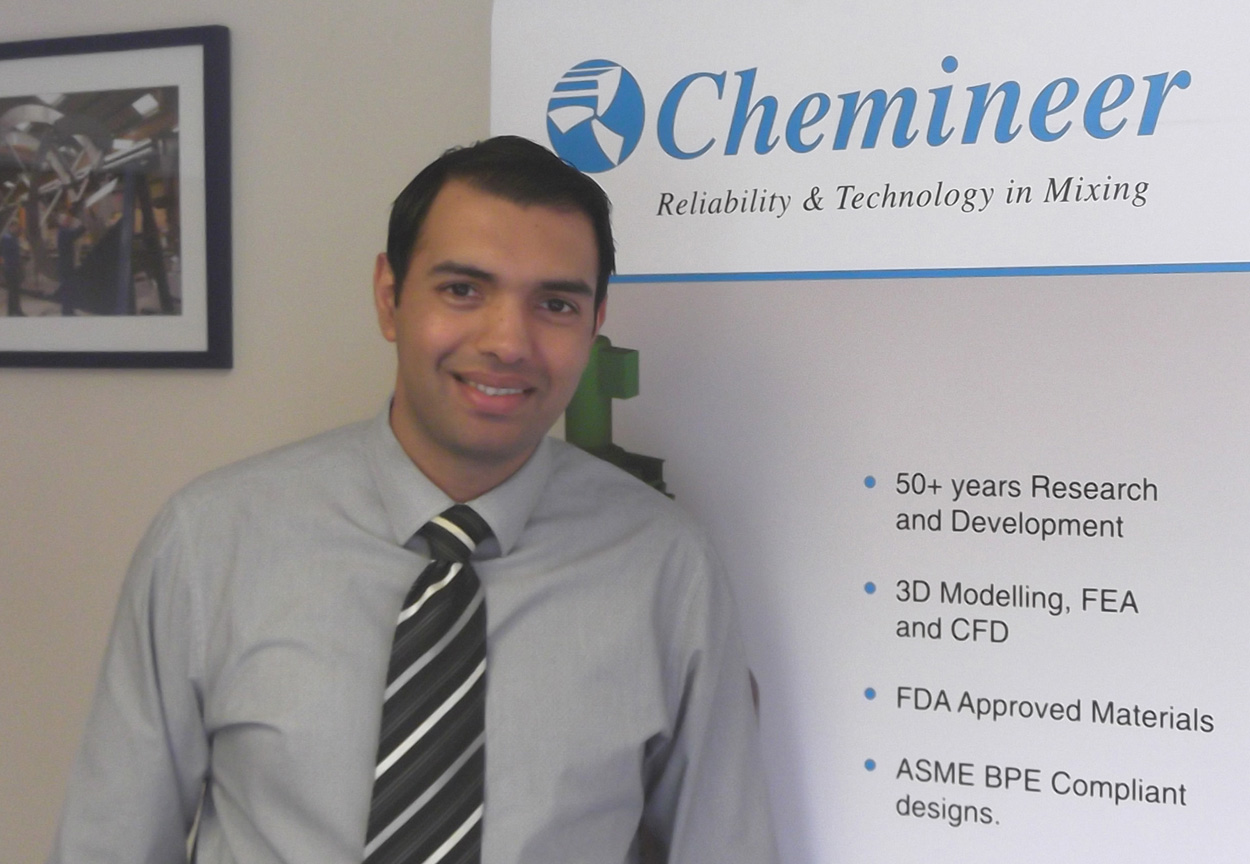Transitional Mixing - Time For Disruption
Impeller choice for transitional mixing has never been as straightforward a choice as for turbulent or laminar applications

Irfan Rehman - Chemineer Sales Manager EuropeBut that could all be set to change with the launch of an innovative energy-saving new design.
According to Chemineer, a brand of NOV, its revolutionary new JT-2 impeller can reduce power consumption by up to 50% in transitional flow blending applications. It claims that improved flow patterns generated by the JT-2 impeller reduce circulation zones and promote sufficient flow between impellers to also lower blend time yields by up to 40%.
“Transitional mixing can be a very challenging area for users who aren’t always sure which mixer or impeller design best suits their application”, said Irfan Rehman, Chemineer’s Sales Manager for Europe, the Middle East and Africa (EMEA).
“Turbulent mixing does not require much consideration as there are many impellers available”, he said, “whilst helix and anchor impellers remain pretty secure choices for laminar mixing. However, transitional mixing occupies that more debatable middle ground, with, until now, customers left for the past few decades with largely only one choice of impeller or a hybrid – and even then, still not really knowing what type of speed to run it at. And importantly, all the time, having to accept whatever energy costs came with it”.
Designed for the often difficult blending of high viscosity and non-Newtonian fluids, the new, specially engineered JT-2 impeller is particularly suitable for when conventional turbines have lost their efficiency due to viscous effects and before the need for close-clearance impellers.
The new design also promotes enhanced blending by efficiently moving material in one direction in the centre of the tank and the opposite direction on the outside of the tank. The increase in impeller efficiency comes from the improved flow pattern that greatly reduced recirculation zones that extend the blend times of other impellers, especially in the chemical industry, although enhanced results are also notable in food, paint and biopharma processes, as well as heat transfer and blending, polymerizations, fermentations and high solid loading slurries.
“Reducing energy by up to 50% is a major breakthrough”, added Rehman. “The JT-2 may not have a wow-factor in its design-look, but in addition to the big reduction in energy costs, this is an impeller that can reduce stagnation in a tank and also improve product quality. Compared to other designs, this also means significantly lower total machine costs”.
In addition, Rehman was keen to emphasise the big opportunities for retrofit; far easier than many would think, with big energy savings to be gained just from a change of impeller that then mixes a tank much quicker, rather than having to replace a complete shaft and motor. The two-bladed JT-2, which is between 70% and 90% of the tank diameter for improved heat transfer, is easy to install, and in the low transitional regime can actually reduce the need for close clearance impellers such as Helix or Anchor in some laminar applications.
“After more than two decades, there is now a new choice for transitional mixing”, continued Rehman. “A huge amount of R&D has gone into this innovative design as we look to innovate and bring better technical solutions to the challenges end-users face when trying to achieve the best mixing results with the most efficiency. The JT-2 design, which is available in a wide range of materials, fully promotes effective blending by efficiently moving material in one direction in the centre of the tank and the opposite direction on the outside of the tank. The improved flow pattern is very significant, reducing the all-important recirculation zones that inefficiently lengthen the blend times of other energy-hungry impellers. This new flow pattern greatly improves the top to bottom communication in the vessel, forcing fluids down and then up, with the added option of it being to set to operate in either direction if required”.
CONTACT
Neil Cathie
Chemineer
chemineeruk@nov.com
www.chemineer.com
+44 1332 363175
Saturday 19 March 2016 / file under Pharmaceuticals | Food and Beverage | Engineering


